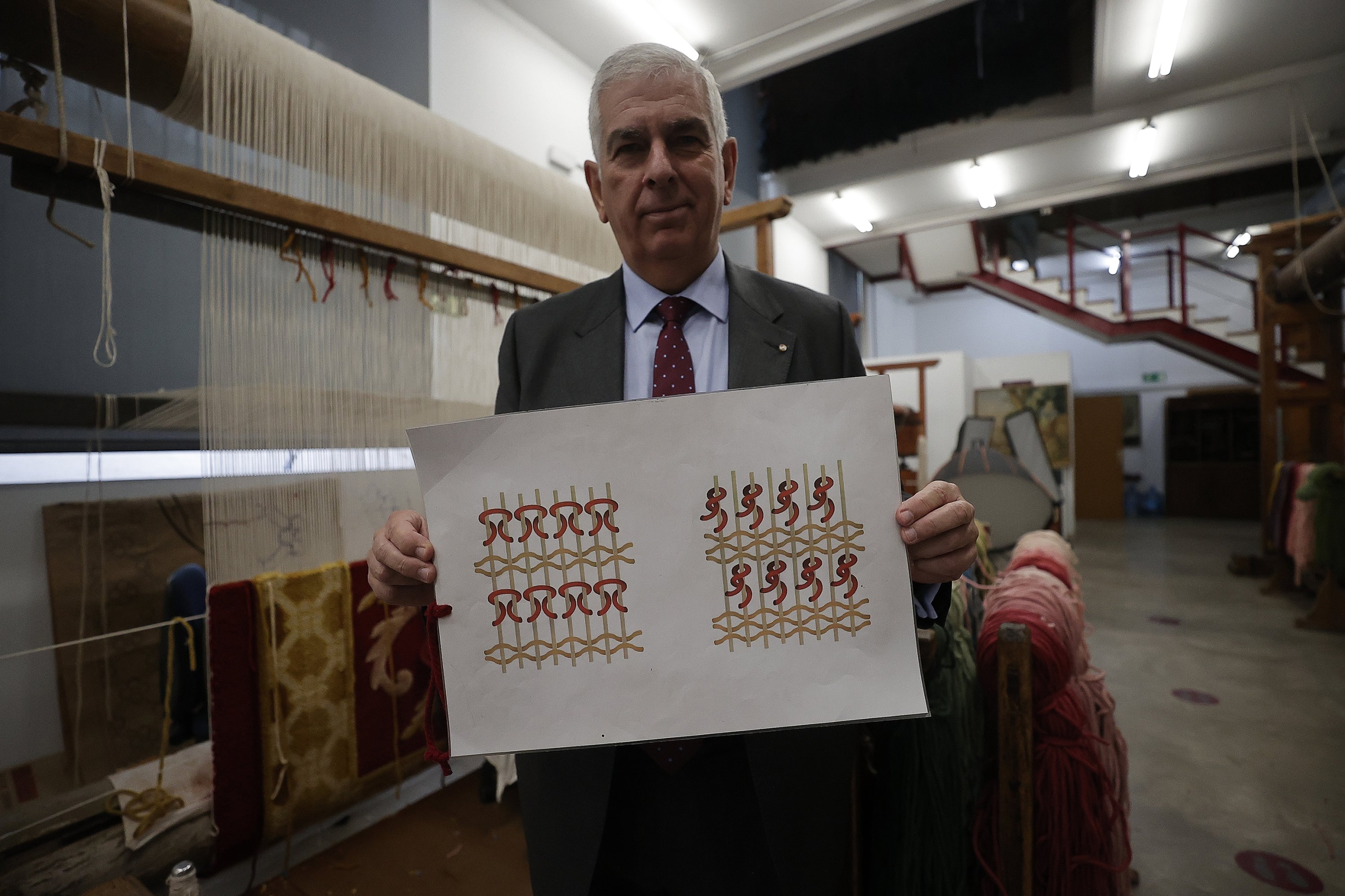ISTANBUL (AA): Rooted in the Andalusian Islamic period (711-1492) in the Iberian Peninsula, Spain has applied to enter the ‘Spanish knot’ in UNESCO’s Intangible Cultural Heritage List as a unique carpet weaving technique
The Spanish government has applied to UNESCO to preserve the Spanish knot, a technique that was inherited from the Muslims during the Andalusian Islamic period.
Carrying the carpet weaving technique to the present day with the name “Spanish knot,” Spain aims to have the technique included in UNESCO’s “Intangible Cultural Heritage List.”
The Royal Carpet Weaving Factory, which was established in the Spanish capital Madrid on the instruction of King Felipe V in 1721, stands out as the only carpet production center that ensures the survival of the Spanish knot technique inherited from the Muslims who ruled the lands for a while.
The technique was first developed in Egypt and came to the Iberian Peninsula during the Islamic period of Andalusia.


The knot differs from the most well-known and applied Turkish knot technique in carpet weaving. As this technique cannot be applied in curved drawings and is symmetrical, it is only used on linen, silk and fine wool yarn. The zigzag patterned technique includes more than 72,500 yarn knots per square meter, while it is about twice as long and expensive to complete as a Turkish knot in terms of time and cost.
Alejandro Klecker de Elizade is the general director of the Royal Carpet Weaving Factory in Madrid, one of the rare places that use both the Turkish knot and Spanish knot techniques in carpet and rug weaving.
Klecker de Elizade explained that the Spanish knot was barely used for a long time after the Muslim domination of the Iberian Peninsula ended in 1492 and the Catholic kings attempted to completely erase the Islamic cultural history from the region, however, initiatives emerged in the 20th century that tried to keep the weaving tradition alive.
“Although there was a great deal of carpet production in Spain in the 15th and 16th centuries, these were always made with Turkish knots. The Spanish knot is much more complex and expensive. It was a technique that was almost in danger of disappearing in the 17th century. In the 20th century, especially in some Spanish cities in the south, such as Cadiz, some weaving workshops were established yet, there was not much success in carpet production because there was not much demand,” Klecker de Elizade said in a statement to Anadolu Agency (AA).


He also stated that the commercial sales of carpets made with Spanish knots are very limited due to their special and expensive nature, emphasizing that their biggest advantage is the Middle East market at the moment.
Turkish carpets adorn Spanish palaces
Explaining that the Turkish knot and Turkish carpets are world-renowned and that they combine the Spanish and Turkish weaving techniques, Klecker de Elizade said: “Everyone recognizes Turkish carpets because the palaces in Spain, the Parliament, the Senate, the Bank of Spain and many of the houses of noble Spanish families are decorated with Turkish carpets. Only one out of every 30 carpets we make is with Spanish knots.”
He also noted that, as the Royal Carpet Weaving Factory, there were initiatives for cooperation between Turkish and Spanish carpet weaving artists, such as restoration techniques and drawing, through the Turkish Embassy in Madrid a few years ago, but they have not been able to implement them yet.
The director also highlighted that it would be very valuable to research the historical changes in Turkish and Spanish carpet art, rediscovering the periods and finding the common points in both cultural practices.
“In the carpet weaving culture, Spain is the heir of the Middle East world in Türkiye’s Ottoman history,” Klecker de Elizade said, mentioning that Spain got its turquoise blue color from the Ottomans, and that silk and wool are completely based on Spanish-Muslim roots.

Highlighting that the Council of Ministers in Spain decided to apply for the Spanish knot to be included in the UNESCO Intangible Cultural Heritage List, Klecker de Elizade noted that there was a lot of demand from different parts of the world regarding the presentation of handicrafts to UNESCO, but that this particular technique will be included in this list after understanding its historical and cultural characteristics.
Jose Ignacio Garcia, who entered this factory with a passion for drawing and has been carpet weaving for 49 years, said: “There are only few places in the world that do what we do. There is no factory like us in Europe. As in many handicrafts, if this technique is not preserved, it will be fading. For this reason, it definitely needs to be included in the cultural heritage list for its preservation.






